Accessible Health Care Briefs: HEALTH CARE (Clinic/Outpatient) FACILITIES ACCESS
2. IMPROVING PHYSICAL ACCESS
People with disabilities should be able to travel to a health care site, approach and enter and move around the building as conveniently as everyone else. Access issues that should be considered include:
2. a. Accessible route into and throughout the facility - The following is a 4-point guideline for ensuring equal access from the parking lot, outdoor walkways, entrances and exists of the buildings.
-
At least one accessible route within the boundary of the site shall be provided from public transportation stops, accessible parking, and accessible passenger loading zones, and public streets or sidewalks to the accessible building entrance they serve. The accessible route shall, to the maximum extent feasible, coincide with the route for the general public.
-
At least one accessible route shall connect accessible buildings, facilities, elements, and spaces that are on the same site.
-
At least one accessible route shall connect accessible building or facility entrances with all accessible spaces and elements and with all accessible dwelling units within the building or facility.
-
An accessible route shall connect at least one accessible entrance of each accessible dwelling unit with those exterior and interior spaces and facilities that serve the accessible dwelling unit.v
2. a. i. Accessible Parking vi
“A greater number of accessible parking spaces is required at facilities providing medical care and other services for persons with mobility impairments. The term "mobility impairments" is intended to include:
-
conditions requiring the use or assistance of a brace, cane, crutch, prosthetic device, wheelchair or other mobility aid;
-
arthritic, neurological, or orthopedic conditions that severely limit one's ability to walk;
-
respiratory diseases and other conditions which may require the use of portable oxygen; or
-
cardiac conditions that impose significant functional limitations.
At outpatient facilities, 10% of the parking spaces must be accessible. Facilities that specialize in medical treatment and other services for persons with mobility impairment are required to have 20% of parking spaces accessible. Other facilities (including medical care facilities) that do not provide outpatient services or specialized service for persons with mobility impairments are subject only to the general scoping requirement in the table in ADAAG 4.1.2(5)(a).”
-
Facilities and Units Specializing in Treatment or Services for Persons with Mobility Impairments
“Facilities or units that specialize in treatment or other services for persons with mobility impairments, including vocational rehabilitation and physical therapy, must have 20% of parking spaces accessible. These are facilities in which the treatment or service specifically serves persons with mobility impairments, such as spinal cord injury treatment centers, prosthetic and orthotic retail establishments, and vocational rehabilitation centers for persons with mobility impairments. This requirement does not apply to facilities providing, but not specializing in, services or treatment for persons with mobility impairments, such as general rehabilitative counseling or therapy centers. In determining whether a facility is subject to this requirement, both the nature of the services or treatment provided and the population they serve should be carefully considered.”
Note: for more information on parking and loading specifications including diagrams, slope requirements, location, and signage, refer to ADAAG Section 4.6 Parking and Passenger Loading Zones.
Figure 1: Health care facility entrance depicting accessible parking, smooth transitions to loading and walking areas, covered entrance, and easily visible entrance signage.vii
A. Directional Signage
-
If the accessible entrance is one other than the main entrance, a sign at the main entrance should indicate the location of the accessible entrance and the alternate route for access. The travel distances from the general route need to be minimized.viii Signage may be necessary along routes to avoid confusion.
Figure 2: Direction signage indicating accessible entrance pointing to the right side of the building.
-
Effective Braille and tactile signs are an important way to make facilities welcoming and functional for people with vision limitations. “Characters and symbols should have backgrounds in eggshell, matte, or other non-glare finish, and contrast with their background -- either light characters on a dark background or dark characters on a light background.” ix
Figure 3 and 4: Two examples of signage containing contrasting colors, tactile diagrams and Braille.x
For a complete list of signage specifications including character height, proportion, font, size, and mounting placement refer to ADAAG Section 4.30 Signage.
2. a. iii. Clear (Path-of-Travel) Floor Space
Access also includes how people will move into and around lobby and office reception areas, and determine the unobstructed floor or ground space to accommodate a wheelchair user. (Figure 7 below)xi
2. a. iv. Path-of-Travel (wheelchair) space allowances.xii In general, a 36” wide accessible route is needed with a slightly larger space provided at corners. If a 180° turn is needed to exit an area, then a 60” diameter turning space or a 36” wide "T" is needed (see Figure 11).
-
C1. Accessible route turns around an obstruction:
-
C2. T-Shaped Space for 180° degree turns
A - Figure 8: Clear ground space width: The minimum clear floor or ground space required accommodating a single, stationary wheelchair and occupant is 30 in by 48 in (760 mm by 1220 mm).
B – Figure 9: Maximum doorway depth and passage width: The minimum clear passage width for a single wheelchair shall be 36 inches (915 mm) minimum along an accessible route, but may be reduced to 32 inches (815 mm) minimum.
C1 – Figure 10: Accessible route turns around an obstruction: A U-turn around an obstruction less than 48 inches (1220 mm) wide may be made if passage width is a minimum of 42 inches (1065 mm) and base of U-turn space is a minimum of 48 inches.
C2 – Figure 11: T-Shaped Space for 180° Degree Turns. The T-shape space is 36 inches (915 mm) wide at the top and stem within a 60-inch-by-60 in.
2. b. i. Clear door openings: Door openings should provide a clear width of 32 inches (815 mm) minimum. Clear openings of doorways with swinging doors shall be measured between the face of the door and the stop, with the door open 90° degrees.xiv
Figure 13: Clear width of doorways – 32 inches
2. b. ii. Accessible Door Hardware
-
Door handles: Inaccessible door hardware (Figure 14 below) can prevent access to medical offices. For example, the handle shown below requires the user to tightly grasp the handle to open the door. People who have limitations in grasping, such as arthritis, find this type of handle difficult or impossible to use. Hardware required for accessible door passage shall be mounted no higher than 48 in (1220 mm) above finished floor. xv
Figure 14 and 15 (top and bottom left) Non-accessible door handles
-
A thumb latch is not accessible because one must grasp the handle and pinch down on the thumb latch at the same time.
-
A round door knob (which requires tight grasping and twisting to operate) or a handle with a thumb latch are also inaccessible and should be modified or replaced, if doing so is readily achievable.
Accessible door handles
-
Figure 16: (left) A loop-type handle is accessible because it can be used without grasping, pinching or twisting.
-
Figure 17 (below) A lever handle is also accessible because it can be operated without a tight grasp, pinching or twisting.
Tip: Close-fist test, try opening the door or operating the control using only one hand, held in a fist; if you can, than the door is usable by a broad range of people. The same is true for faucets, handles, drawer pulls, and vending machine controls.
2. c. REACH RANGES
The maximum reach ranges (detailed below) should be considered in the placement of information brochures, magazines and other items located in medical office lobbies, reception, and waiting room areas. Figure 18 (high forward reach range), and Figure 19 (side reach range) illustrate reach ranges accessible to wheelchair users or people with limited mobility.
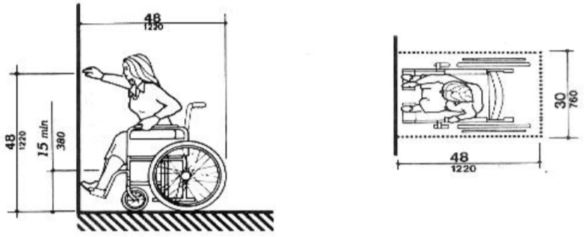
Figure 18: High forward reach limit: Forward reach range is 48 inches maximum and 15 inches minimum. xvi
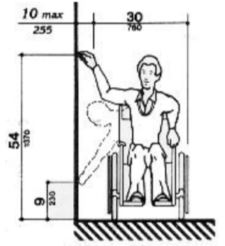
Figure 19: Side reach limits: The 30by48inch wheelchair clear floor space is located a maximum 10 inches (255 mm) from the wall. Side reach height range is 54 inches maximum and 9 inches minimum. xvii
2. c. i. Forward reach
Figure 18: High forward reach limit: Forward reach range is 48 inches maximum and 15 inches minimum.xvi
2. c. ii. Side reach
Figure 19: Side reach limits: The 30-by-48-inch wheelchair clear floor space is located a maximum 10 inches (255 mm) from the wall. Side reach height range is 54 inches maximum and 9 inches minimum.xvii
2. d. PATIENT RECEPTION DESKS
Reception desks should have a lower section where scooter and wheelchair users and people of short stature can easily communicate with staff. Compliant height range is 28 - 34 inches.xviii
Figure 20: Accessible reception desk Figure 21: Non-accessible reception desk
2. e. ACCESSIBLE TOILET AND DRESSING ROOMS
Figure 22: Diagram of features of an accessible dressing and toilet room.xix

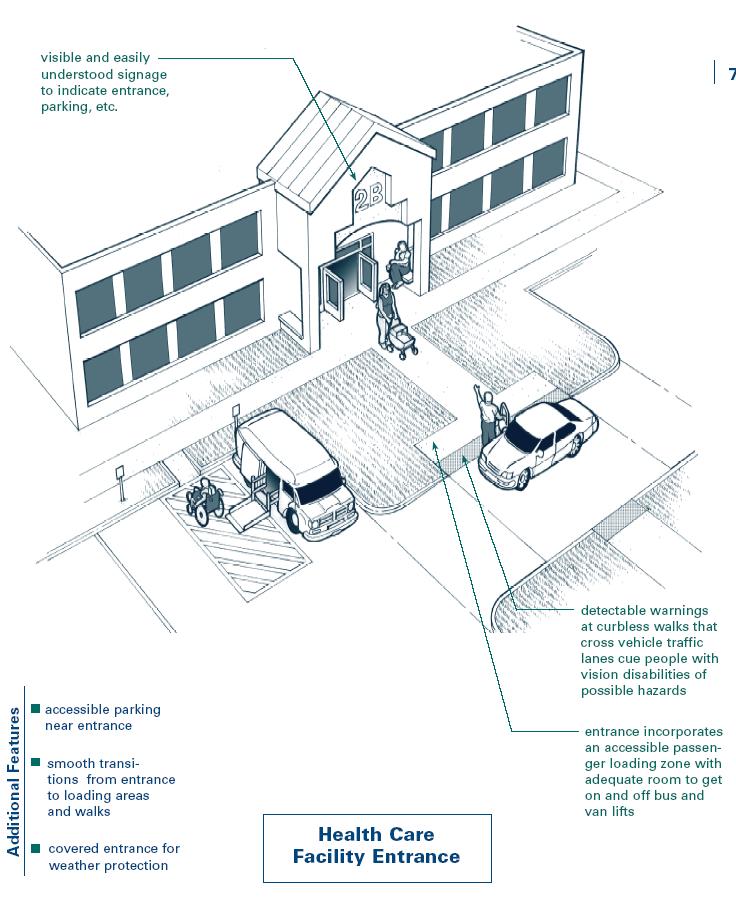
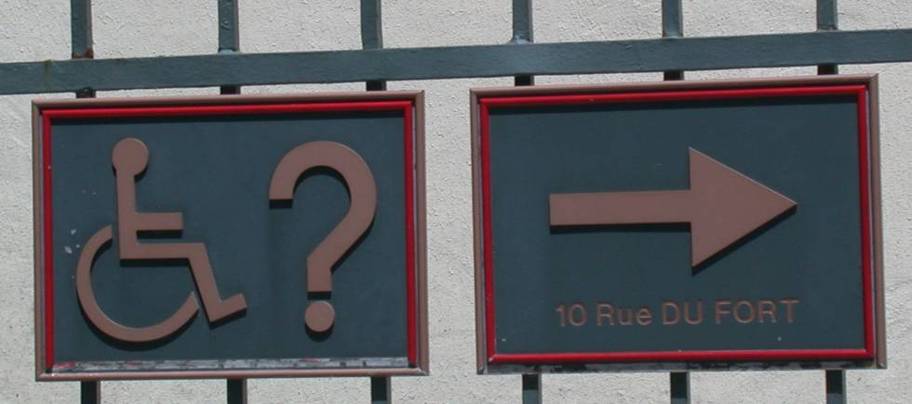
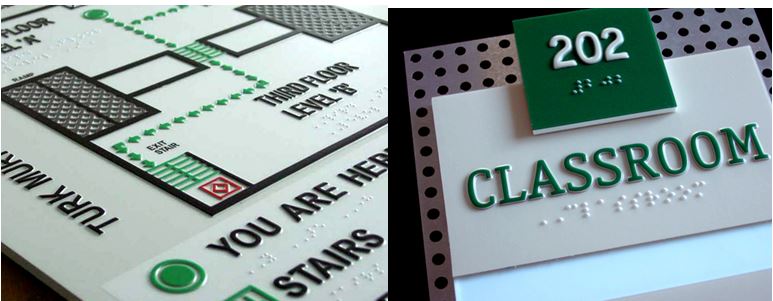
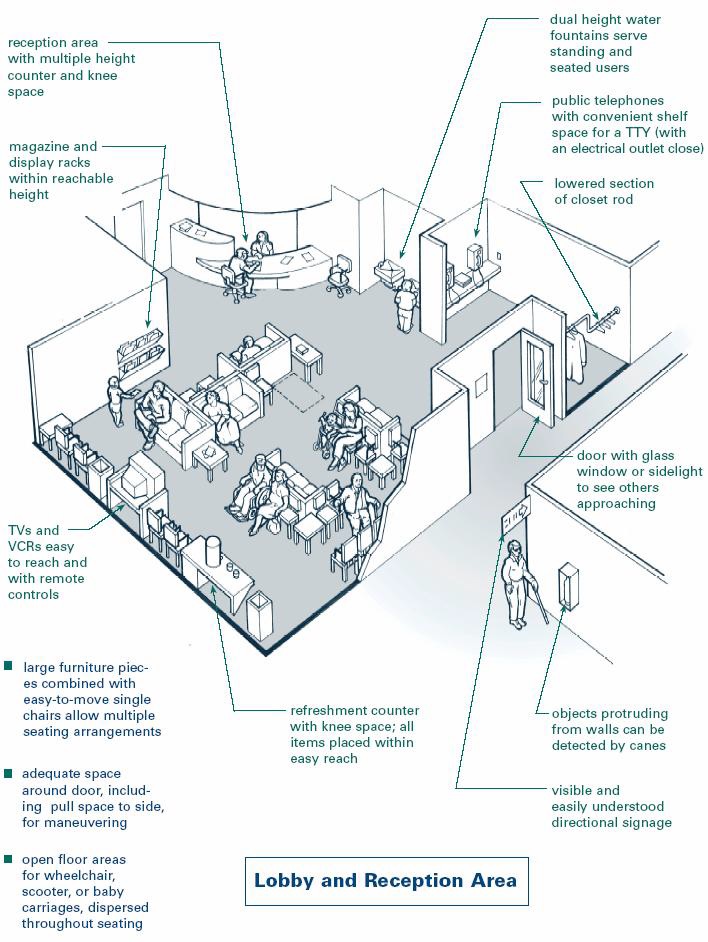
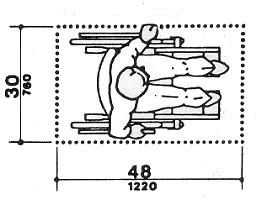
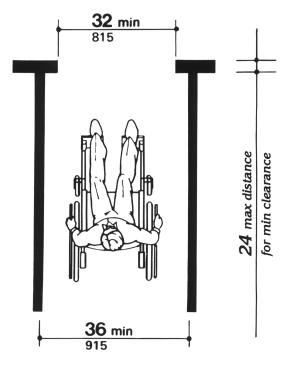
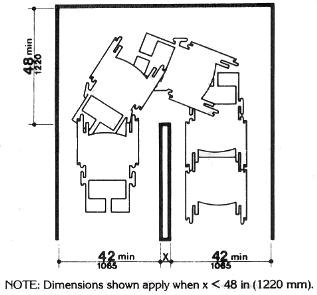
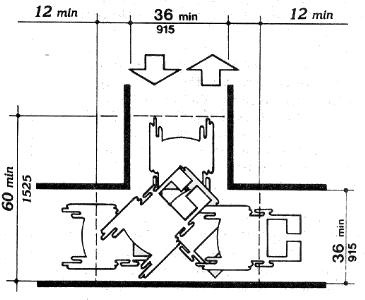
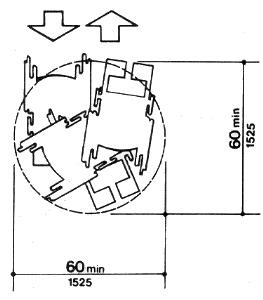

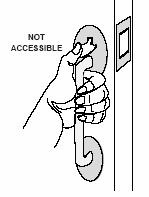
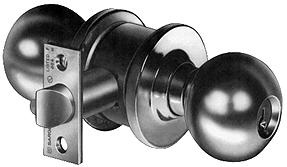
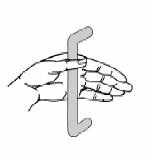
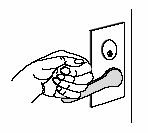
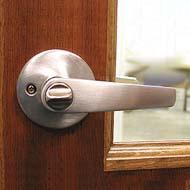
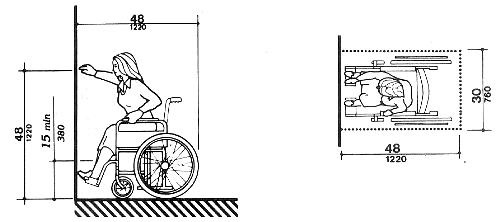
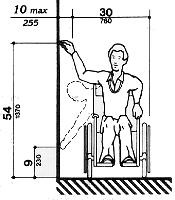
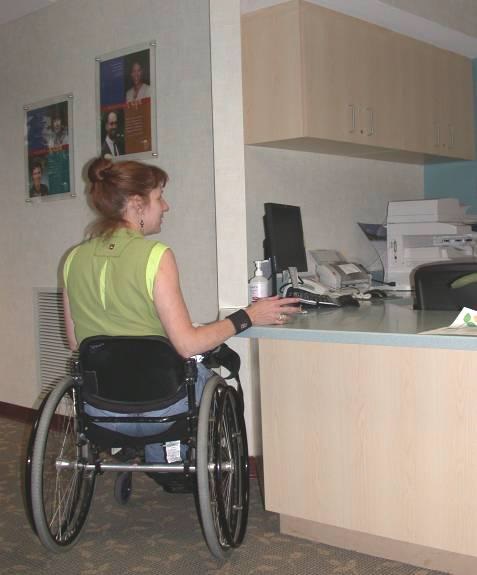
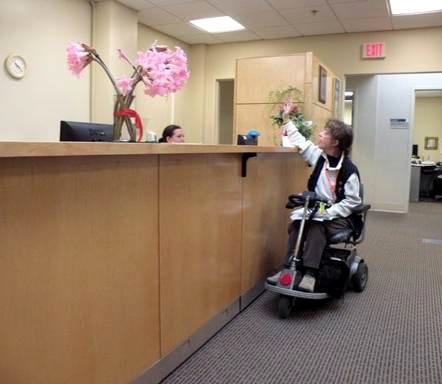
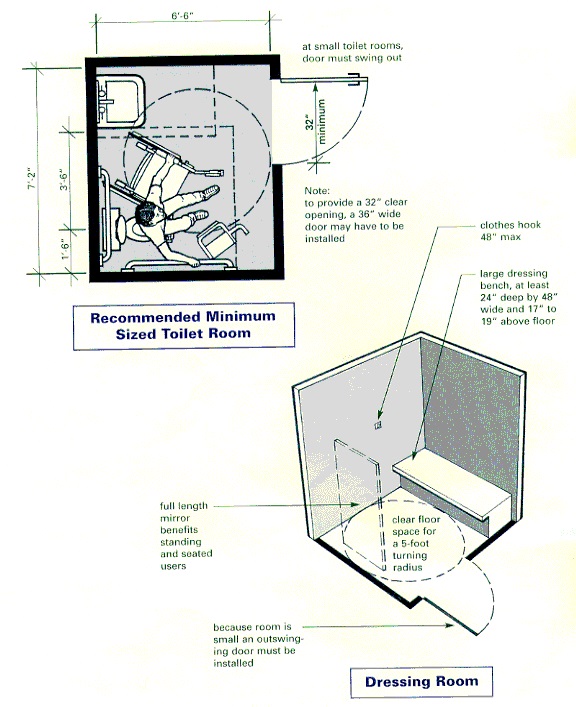
User Comments/Questions
Add Comment/Question